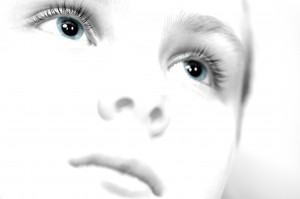Other Eating Disorders
There are people who do not fit into the main categories of eating disorders, but who nevertheless exhibit eating disturbances.
Typical examples of such cases are:
- Partial Syndrome. You limit your intake of food and are preoccupied with your weight, you swing between frenzied eating and vomiting, and have other eating disorders symptoms, but still do not meet the full diagnostic criteria for full-blown eating disorders.
- Obsessive Dieters or Weight-Preoccupied Individuals. You think a lot about your weight and figure but not so much that you belong to the “Partial Syndrome” group.
- Obese individuals with Eating Disorders. You eat more than you need and allow your weight to become too high for good health. Overweight can have other causes than eating disorders and can be caused by an eating disorder if there are psychological reasons for eating more than the body needs, such as when negative emotions (anger, boredom, disappointment, etc.) cause an abnormal craving for food.
- Non-classifiable Disturbances. Your answer to the eating disorder test may indicate the presence of an eating disorder without any real problem with your weight, figure or eating. There are those who compulsively take laxatives to reduce weight but do not regularly eat compulsively. There are women who are very underweight but still have menstruation. A person who does not fulfil the formal definition of eating disorders may nevertheless have a serious eating disorder.
Note: The categories above are from the Web4Health website
More examples are:
- Purging Disorder, characterized by recurrent purging to control weight or shape in the absence of binge eating episodes
- Rumination Syndrome, involving the repeated painless regurgitation of food following a meal which is then either re-chewed and re-swallowed, or discarded.
- Diabulimia is the deliberate manipulation of insulin levels by diabetics in an effort to control their weight.
- Food Maintenance Syndrome is characterized by a set of aberrant eating behaviors of children in foster care.
- Female Athlete Triad is a syndrome in which disordered eating behavior, amenorrhea and/or oligomenorrhea, and decreased bone mineral density (osteoporosis and osteopenia) are present (though not all patients exhibit all three components).
- Eating disorders not otherwise specified (EDNOS) can refer to a number of disorders. It can refer to a female individual who suffers from anorexia but still has her period; it can refer to someone who may still be an “average healthy weight” but who has anorexic thought patterns and behaviors; it can mean the sufferer equally participates in some anorexic as well as bulimic behaviors (sometimes referred to as purge-type anorexia).
- Pica is defined as a compulsive craving for eating, chewing or licking non-food items or foods containing no nutrition. These can include such things as chalk, plaster, paint chips, baking soda, starch, glue, rust, ice, coffee grounds, and cigarette ashes.
- Night Eating Syndrome consists of morning anorexia, evening polyphagia (abnormally increased appetite for consumption of food frequently associated with injury to the hypothalamus) and insomnia.
- Nocturnal Sleep Related Eating Disorder
- Orthorexia Nervosa is an obsession with a “pure” diet, where it interferes with a person’s life. It becomes a way of life filled with chronic concern for the quality of food being consumed. When the person suffering with orthorexia slips up from wavering from their “perfect” diet, they may resort to extreme acts of further self-discipline, including even stricter regimens and fasting.
